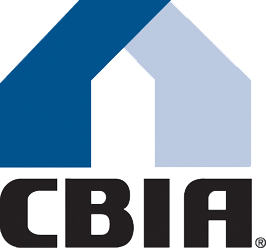By Ali Sahabi of Optimum Group, LLC
President, Building Industry Association (BIA) Baldy View Chapter
Of the many factors that make today’s new home one of the best values for the homeowner’s dollar is that today’s new homes are constructed with the finest state-of-the-art components, designs and techniques. That is why before new homeowners move into their new home, they are guided through one of the most important parts of the sale, known as the ‘walk-through’.
The technical term for the walk-through phase of your newly constructed home is the Warranty Orientation and is a final inspection before the settlement phase in which you and your homebuilder's staff will literally walk through your new home and make sure you're instructed on how everything works correctly and to spot any slight imperfections that need to be corrected.
The walk-through covers educating homeowners on the operations of the home's components such as heating and cooling systems, appliances, emergency detectors and landscape irrigation to help owners understand home’s warranty coverages and procedures. It also clarifies the buyer's responsibilities for maintenance and upkeep and introduces new homeowners to their new community.
Most importantly, the walk-through provides an opportunity to spot items which may need to be corrected or adjusted, learn about the way your new home works and ask questions about anything you don't understand.
There are four basic objectives to the walk-through:
1. the operation of the house's components,
2. the buyer's responsibilities for maintenance and upkeep,
3. warranty coverages and procedures; and
4. introducing the community in which the home is located.
Because with a new house, you will receive a stack of instruction booklets all at once, it helps if someone takes the time to show you how to operate all of the kitchen appliances, heating and cooling systems, water heater and other features. Such an orientation is particularly useful because people often are so busy during a move that they have trouble finding time to carefully read instruction booklets.
Part of your walk-through will be learning about maintenance and upkeep responsibilities. Most new homes come with a one-year warranty on workmanship and materials. However, such warranties do not cover problems that develop because of failure to perform required maintenance. Many builders provide a booklet explaining common upkeep responsibilities of new home owners and how to perform them. Should a warranted problem arise after you move in, the builder is likely to have a set of warranty service procedures to follow.
Many builders schedule two visits during the first year — one near the beginning and the other near the end — to make necessary adjustments and to perform work of a non-emergency nature. Issues that occur because of the natural settling of the house are generally addressed in the visit near the end of the first year.
So when it comes time for the walk-through, start by keeping a checklist when inspecting the house. The list should include everything that needs attention, and you and your builder should agree to a timetable for repairs. Builders prefer to remedy problems before you move in because it is easier to work in an empty house. Some items may have to be corrected after move-in. For instance, if your walk-through is in the winter, your builder may have to delay landscaping adjustments until spring.
Be thorough and observant during the walk-through. Examine all surfaces of counters, fixtures, floors and walls for possible damage carefully. Feel free to ask all the questions you want. Your builder wants you to be satisfied with your purchase because homebuilders take pride in building the best product that can be built and the walk-through is more than an opportunity to ensure that your American Dream of homeownership is the best that it can be.

































